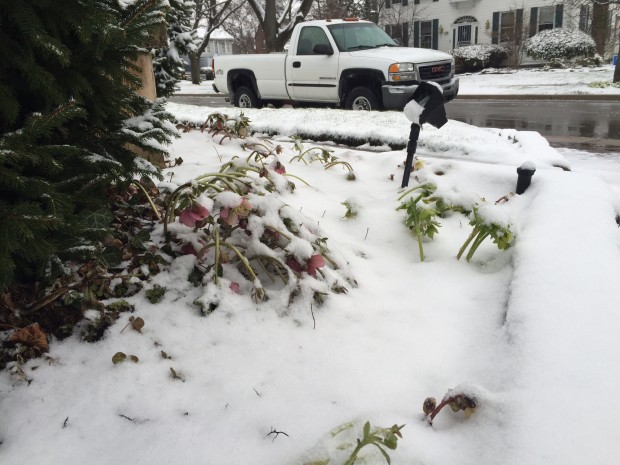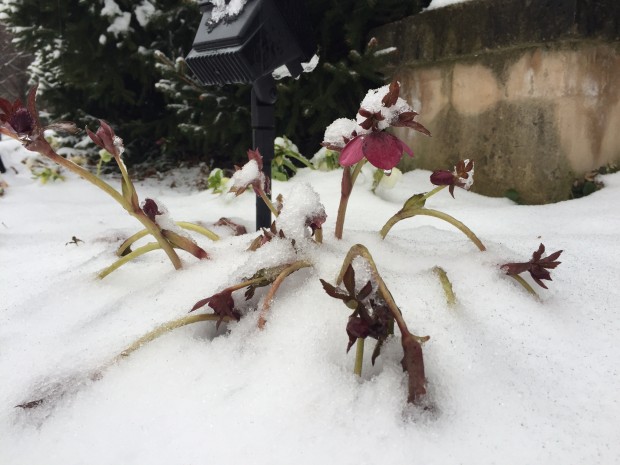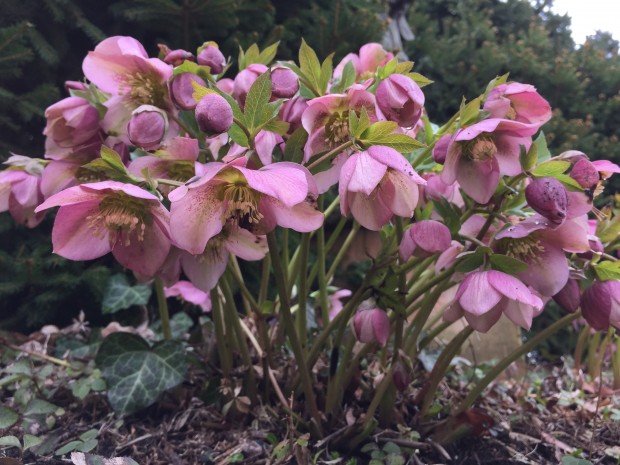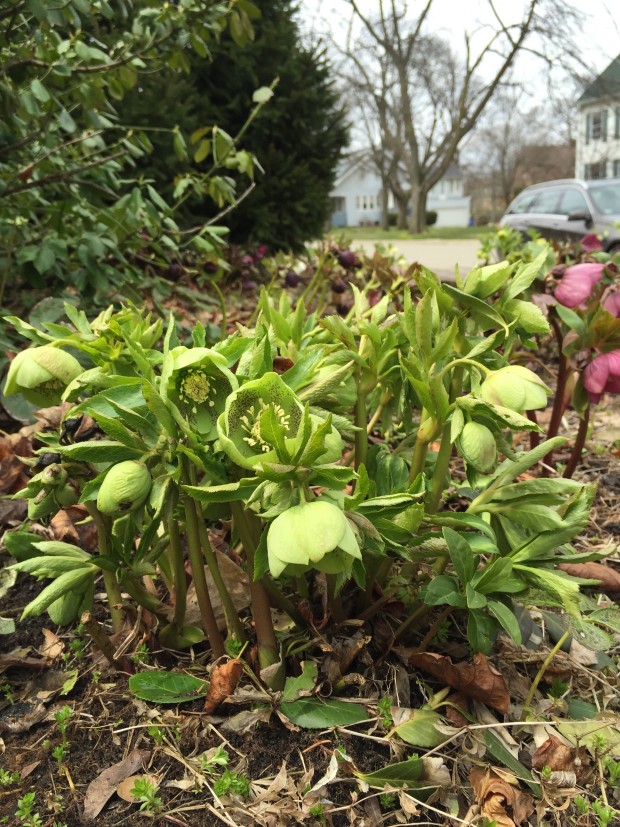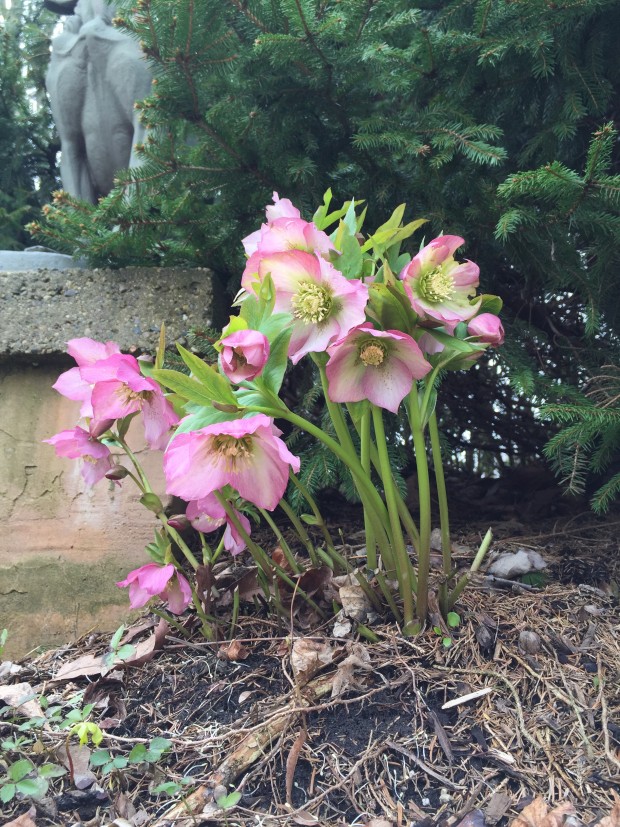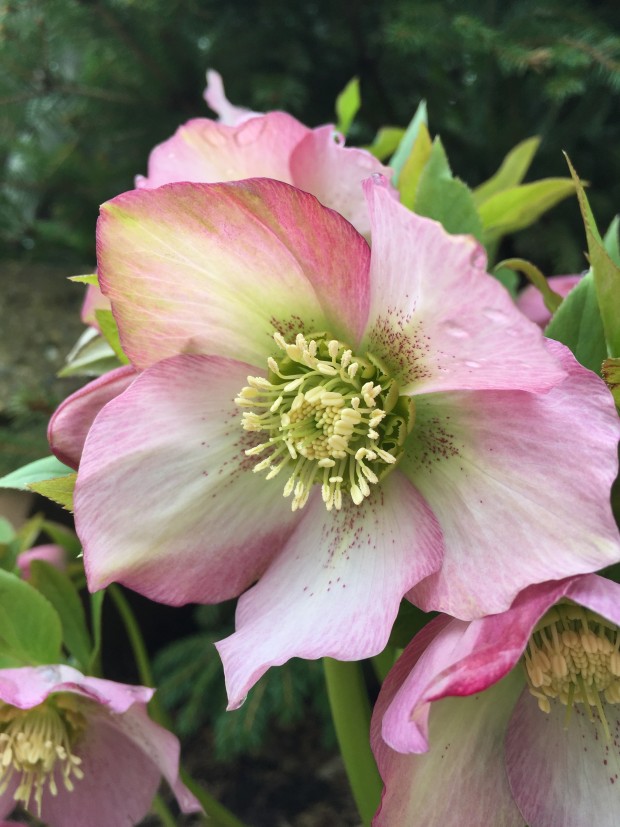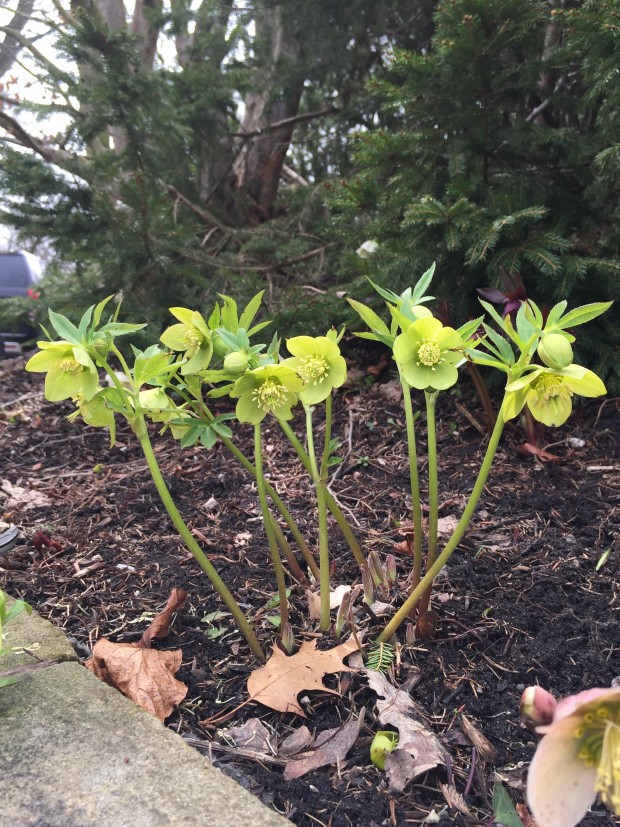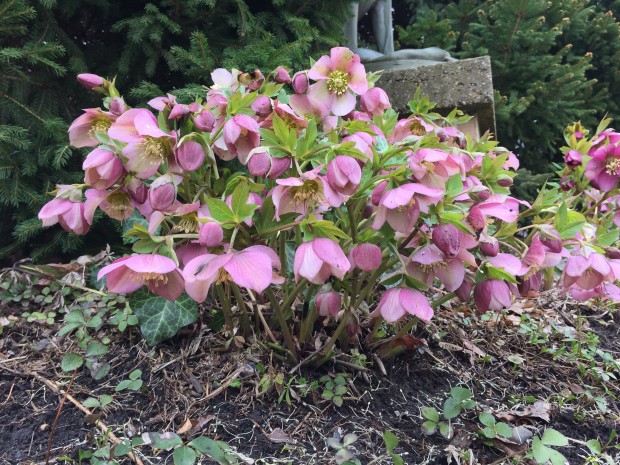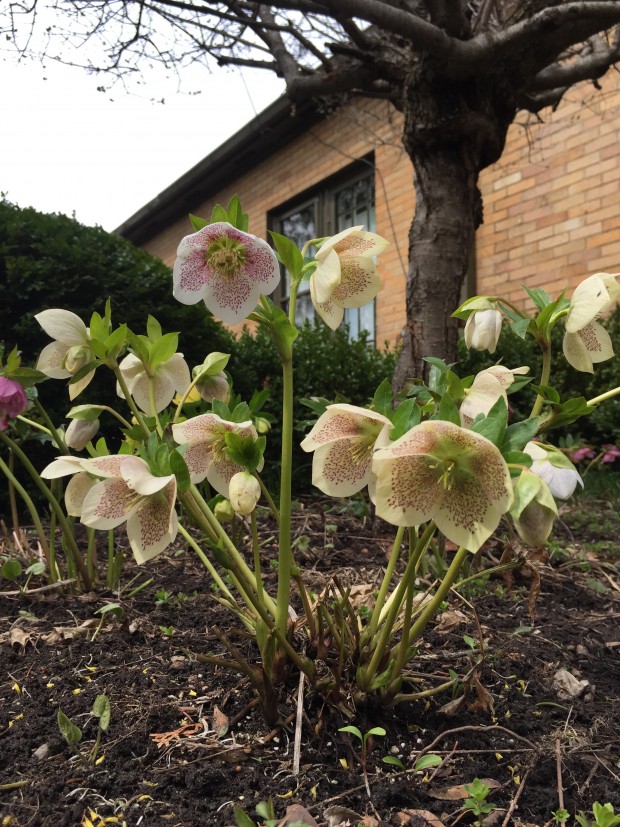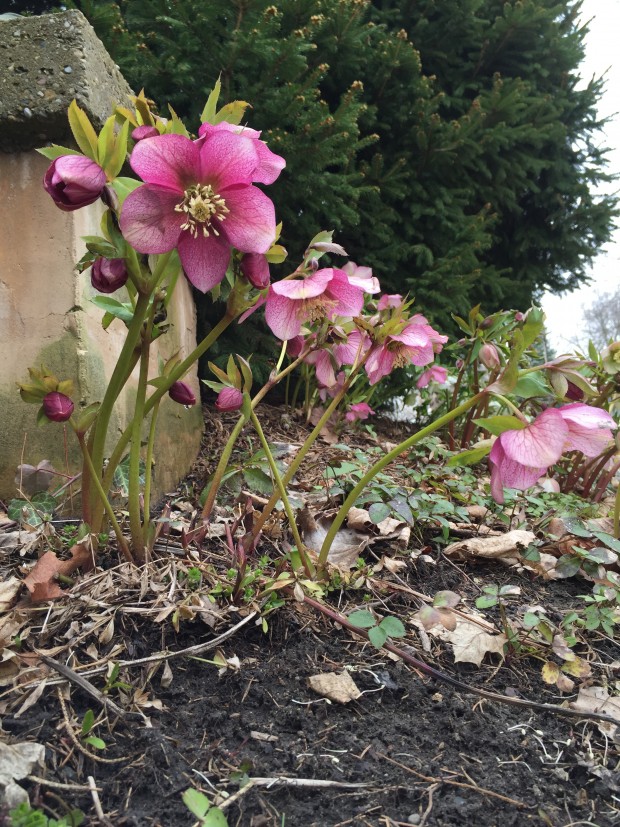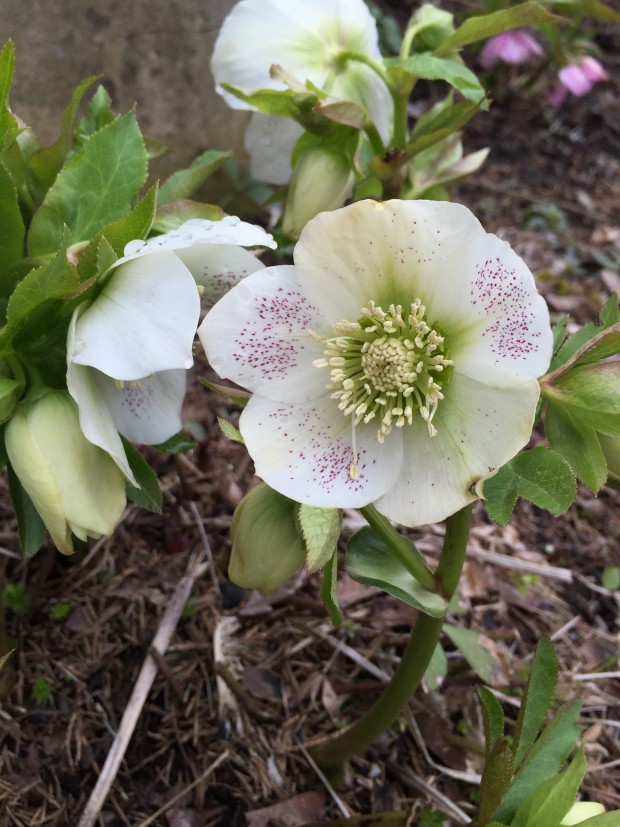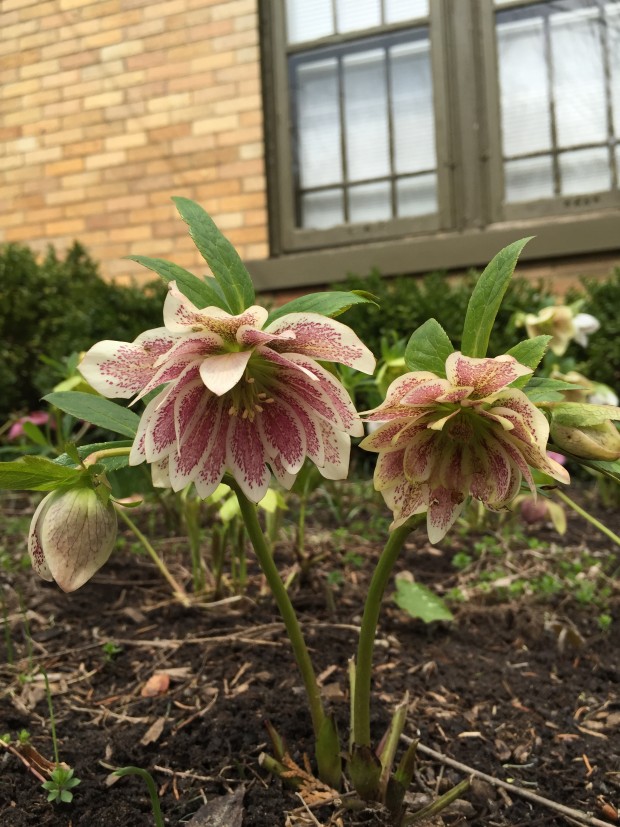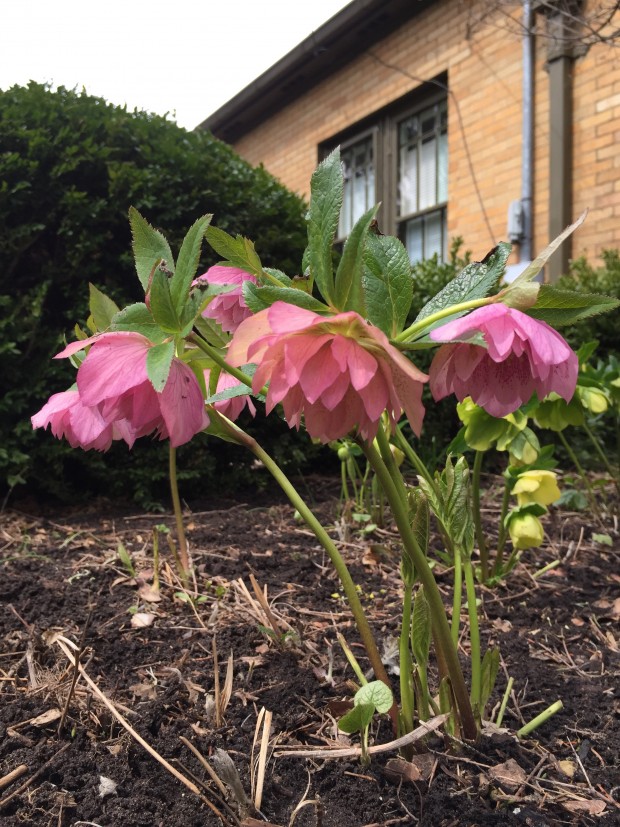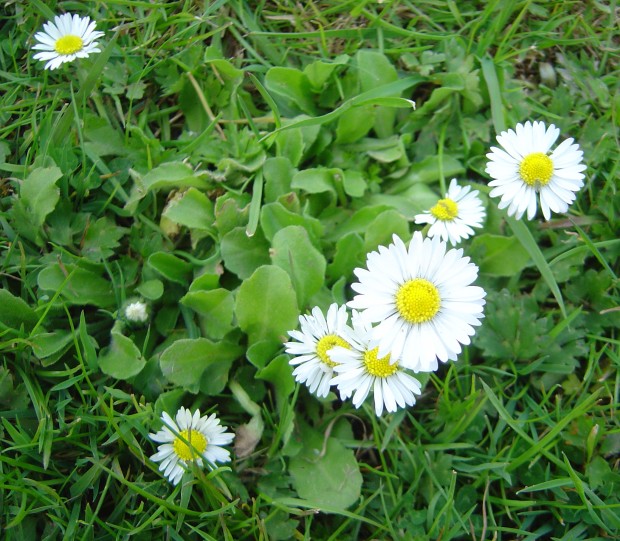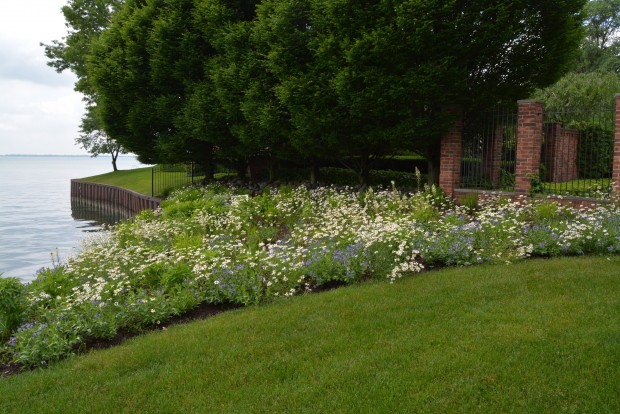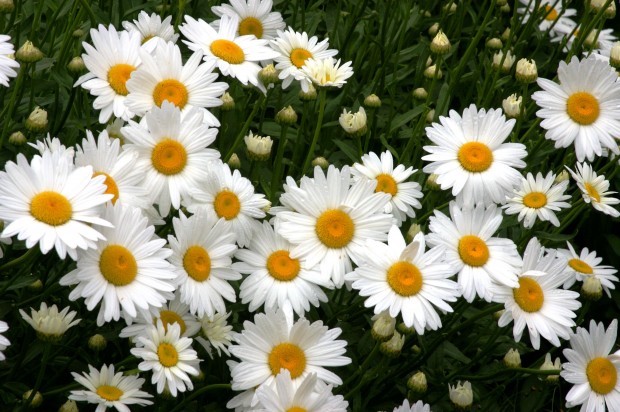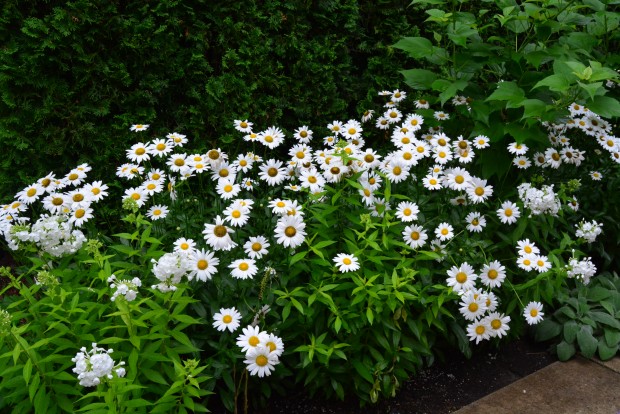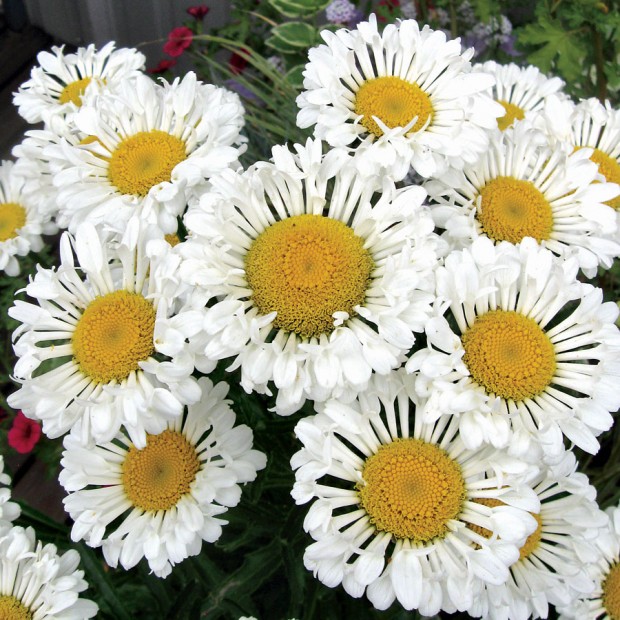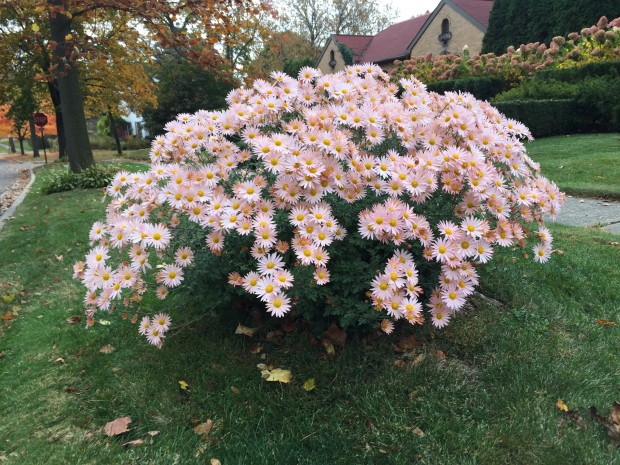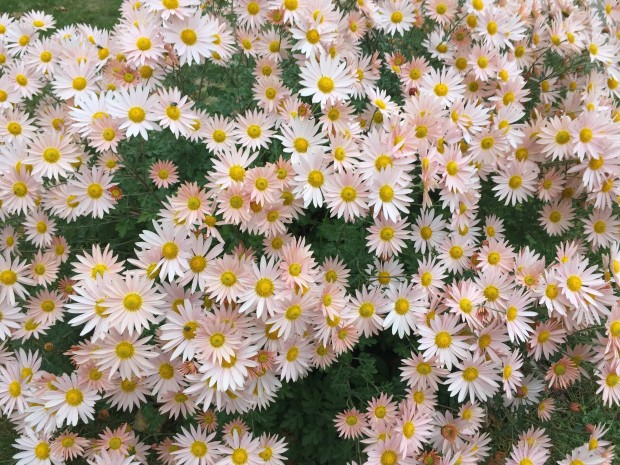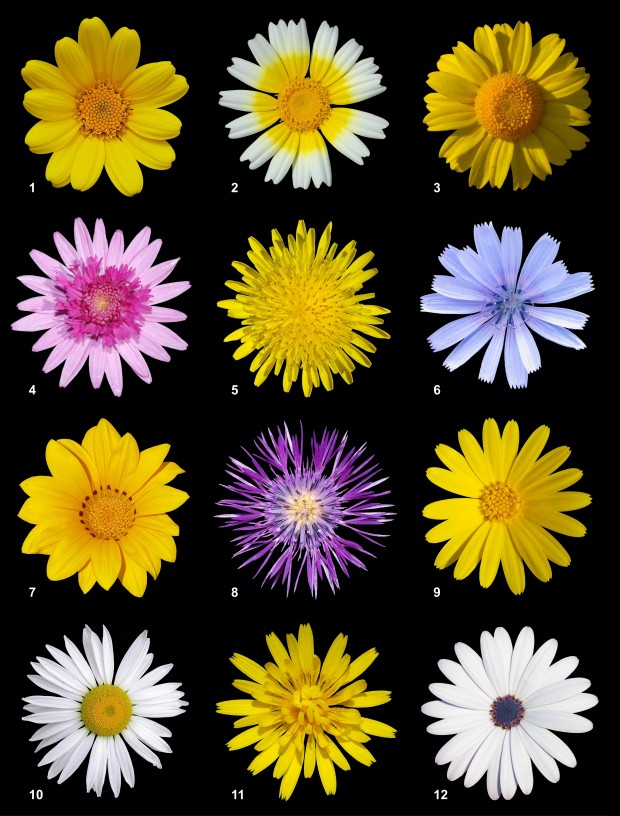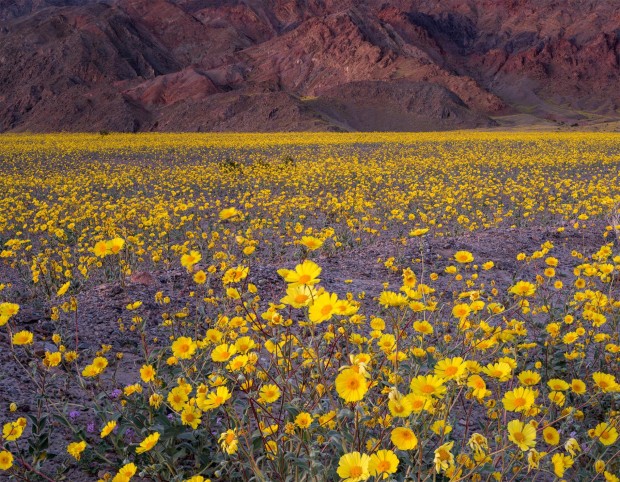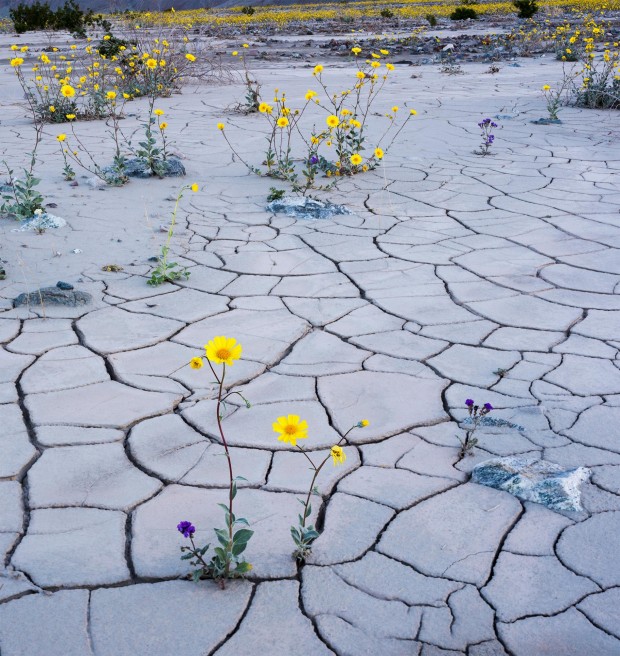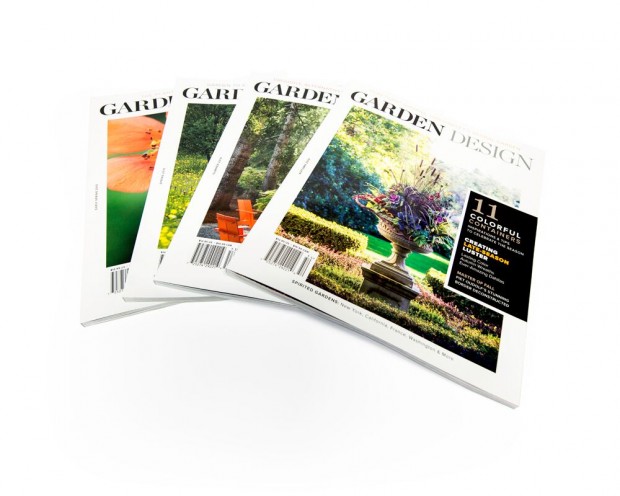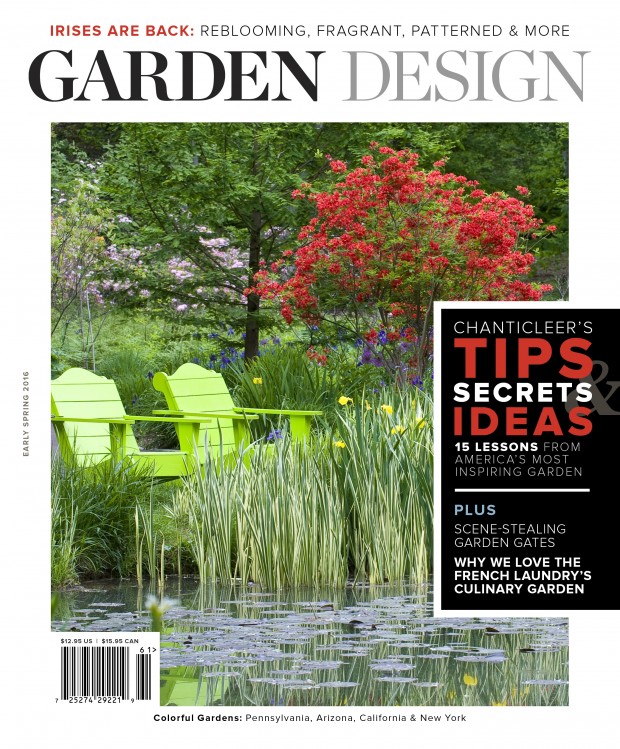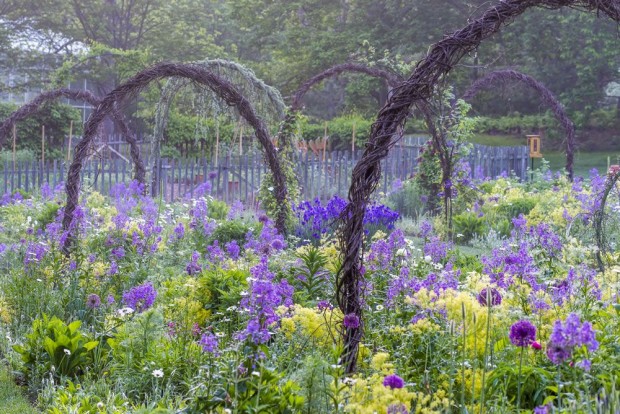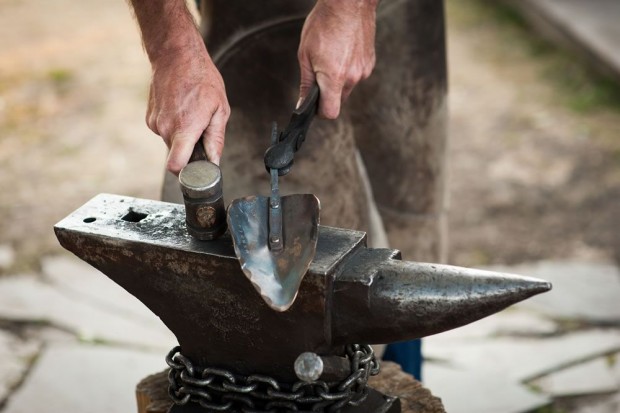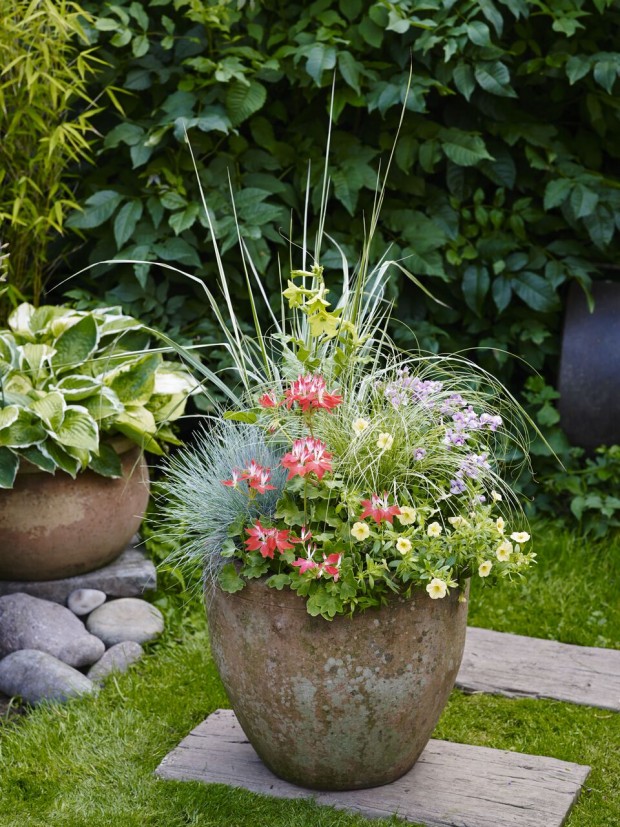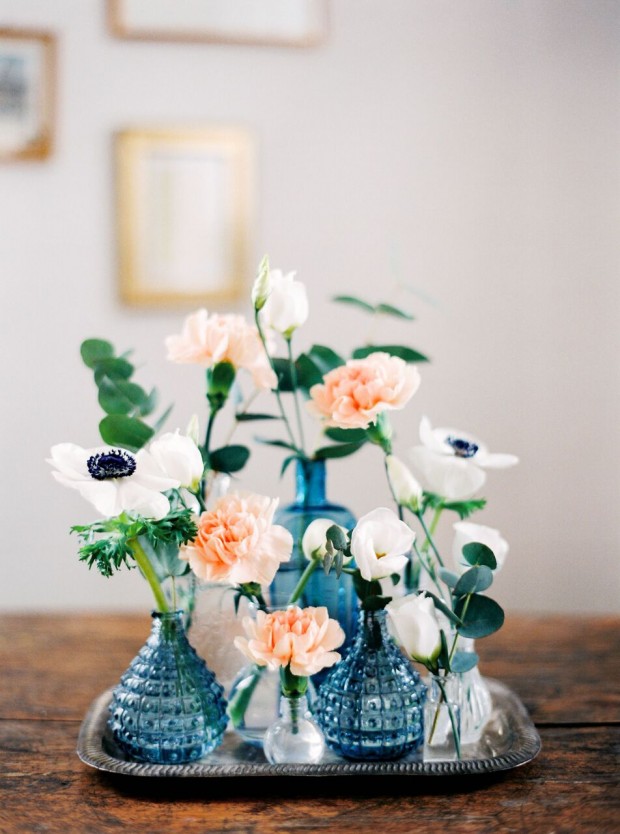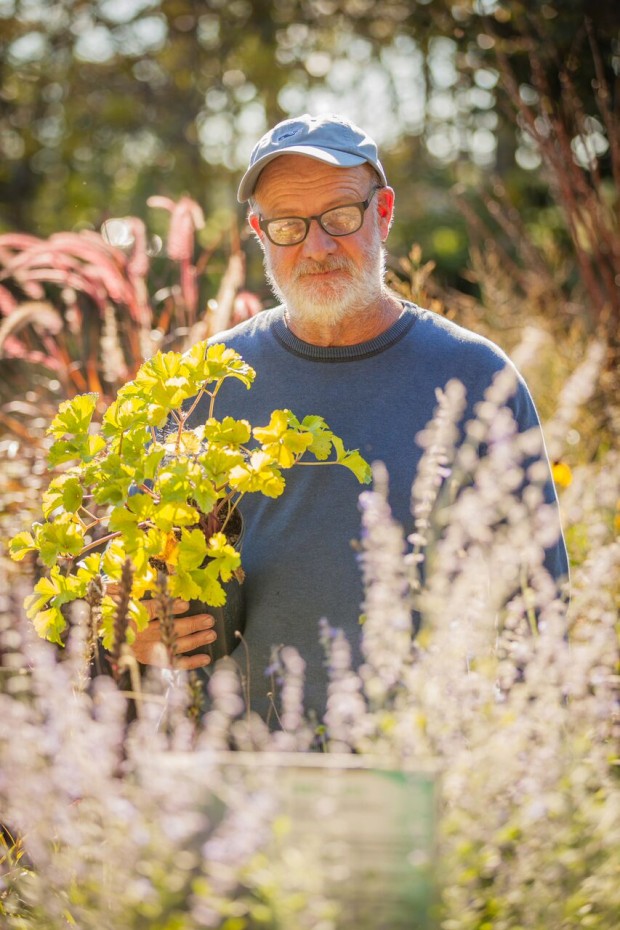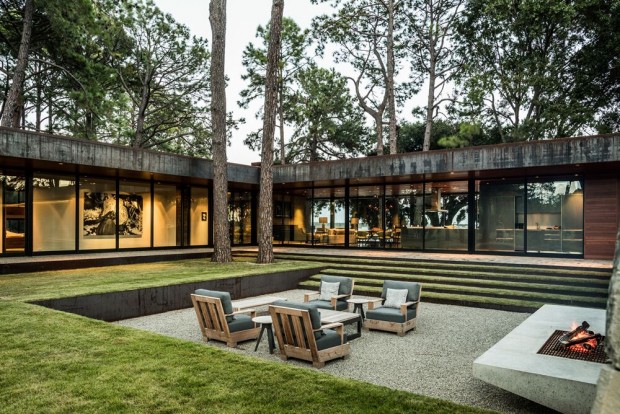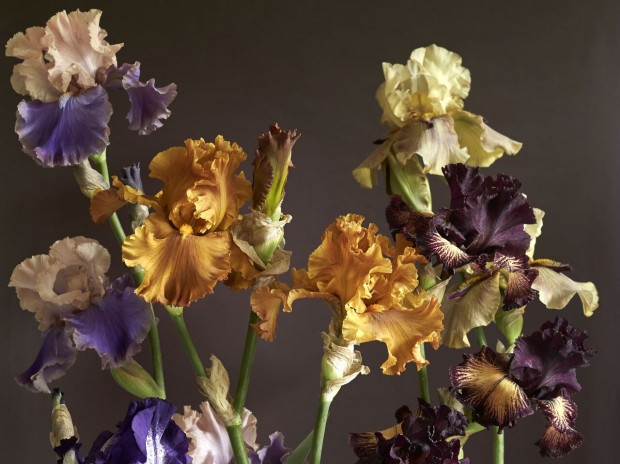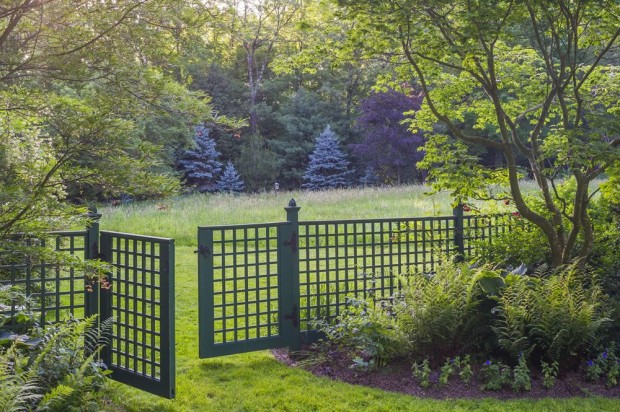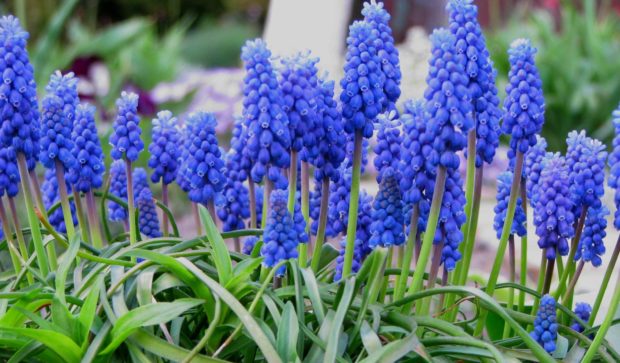 In my opinion, a drift of grape hyacinths in full bloom is one of spring’s crowning moments. They may be small, but they pack a big visual punch. The muscari group is one of the most charming and most reliable of all of the small spring flowering bulbs. The tiny corm, planted only 3″ below the surface of the soil in the fall, will give rise to a pair of thin strappy white striped leaves, and a flowering raceme the most brilliant shade of cobalt blue. That blue makes a spring garden worth growing.
In my opinion, a drift of grape hyacinths in full bloom is one of spring’s crowning moments. They may be small, but they pack a big visual punch. The muscari group is one of the most charming and most reliable of all of the small spring flowering bulbs. The tiny corm, planted only 3″ below the surface of the soil in the fall, will give rise to a pair of thin strappy white striped leaves, and a flowering raceme the most brilliant shade of cobalt blue. That blue makes a spring garden worth growing.
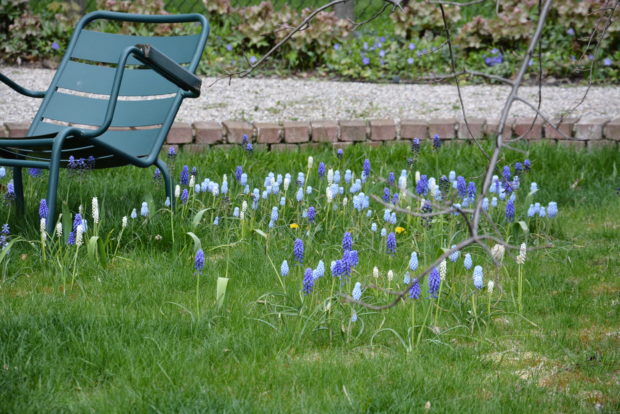 From my favorite on line horticultural reference for the Midwest, the Missouri Botanic Garden Plant Finder, I read the following:
From my favorite on line horticultural reference for the Midwest, the Missouri Botanic Garden Plant Finder, I read the following:
“Muscari armeniacum, commonly called grape hyacinth, is an early spring-blooming bulbous perennial that is native to southeastern Europe (including Armenia). It features conical racemes of slightly fragrant, tightly packed, deep violet blue, urn-shaped flowers atop scapes rising to 8” tall in early spring. Each bulb produces 1-3 scapes with 20-40 flowers per scape. Each flower has a thin white line around the rim. Dense inflorescence purportedly resembles an elongated, upside-down bunch of grapes, hence the common name. Scapes rise up from somewhat floppy clumps of narrow, fleshy, basal, green leaves (to 12” long) that appear in autumn and live through the cold St. Louis winter to spring when the plants flower.”
This description tells me that Muscari will grow well in my garden, but I would like to add that they are simple to plant. All you need is some decent friable soil, and a finger to push them below ground. I have seen corms left laying on the surface send a few roots into the soil, and bloom on their sides the following spring. They are willing.
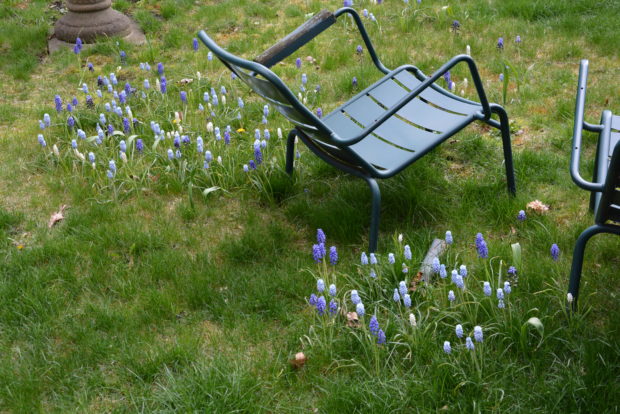 Grape hyacinths will come up and thrive just about anywhere you plant them. I would avoid soggy soil that would rot the corms, and dark places fit only for ferns. They come up through a lawn without complaint. They are incredibly hardy. I have never done anything to mine, except plant and enjoy. They are persistent year after year, and can make substantial clumps. The only difficulty? You have to buy and plant them in the fall. Preferably in 50’s or 100’s. If you are willing and able, they will be too.
Grape hyacinths will come up and thrive just about anywhere you plant them. I would avoid soggy soil that would rot the corms, and dark places fit only for ferns. They come up through a lawn without complaint. They are incredibly hardy. I have never done anything to mine, except plant and enjoy. They are persistent year after year, and can make substantial clumps. The only difficulty? You have to buy and plant them in the fall. Preferably in 50’s or 100’s. If you are willing and able, they will be too.
 A new landscape project I am about to install involves the installation of a fairly large partial shade garden. My clients are very fond of blue flowering plants, and especially blue spring flowering bulbs. The rustic stone walk was finished in late October. The coast was clear to plant bulbs, which we did fairly late in November. It was cold, but as long as the ground is not frozen, spring flowering bulbs can be planted. Since the planting would be late, we stored the bulbs in a cool place, so they would not suffer from being out of the ground so long. Muscari cultivars seldom grow talled than 8″, so planting them near the walk made sense.
A new landscape project I am about to install involves the installation of a fairly large partial shade garden. My clients are very fond of blue flowering plants, and especially blue spring flowering bulbs. The rustic stone walk was finished in late October. The coast was clear to plant bulbs, which we did fairly late in November. It was cold, but as long as the ground is not frozen, spring flowering bulbs can be planted. Since the planting would be late, we stored the bulbs in a cool place, so they would not suffer from being out of the ground so long. Muscari cultivars seldom grow talled than 8″, so planting them near the walk made sense.
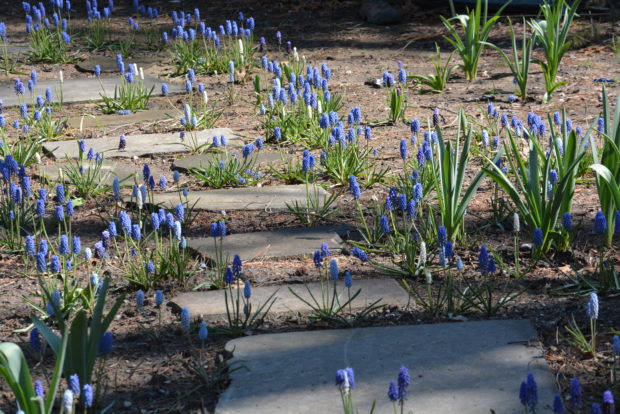 We planted a variety of muscari cultivars, all the the blue and white range. We planted the tried and true muscari armeniacum, and Blue Magic, Atlantic muscari, Magical Mixture, and superstar. Lots of cobalt blue, light blue, with a smattering of white. We also planted several types of camassia, and chionodoxa forbesii Blue Giant, to extend the blue spring bloom period. Later yet, there will be some smaller growing alliums. These muscari blooming make a quite a statement, even though they are blooming in an ocean of bare dirt.
We planted a variety of muscari cultivars, all the the blue and white range. We planted the tried and true muscari armeniacum, and Blue Magic, Atlantic muscari, Magical Mixture, and superstar. Lots of cobalt blue, light blue, with a smattering of white. We also planted several types of camassia, and chionodoxa forbesii Blue Giant, to extend the blue spring bloom period. Later yet, there will be some smaller growing alliums. These muscari blooming make a quite a statement, even though they are blooming in an ocean of bare dirt.
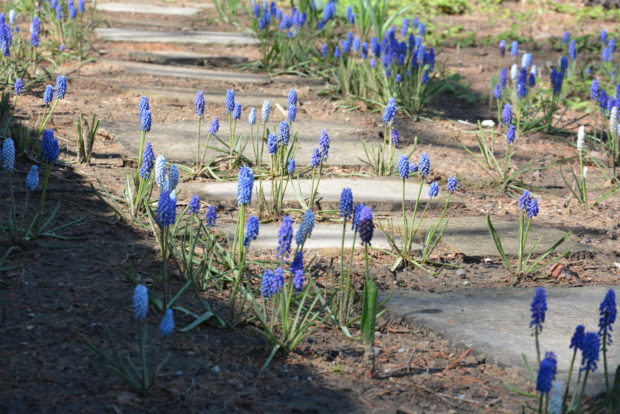 The planting of this woodland garden got a head start last fall. The locations of these bulbs will direct the height and bloom season of what I plant with them. We will plant sweet woodriff and European ginger. Were the soil not so sandy, I would plant forget me nots. I will plant more Virginia bluebells to the patch that is existing, Jack in the pulpit, Dutchman’s britches, anemone sylvestris, campanula porscharskyana, lamium white nancy, and so on.
The planting of this woodland garden got a head start last fall. The locations of these bulbs will direct the height and bloom season of what I plant with them. We will plant sweet woodriff and European ginger. Were the soil not so sandy, I would plant forget me nots. I will plant more Virginia bluebells to the patch that is existing, Jack in the pulpit, Dutchman’s britches, anemone sylvestris, campanula porscharskyana, lamium white nancy, and so on.
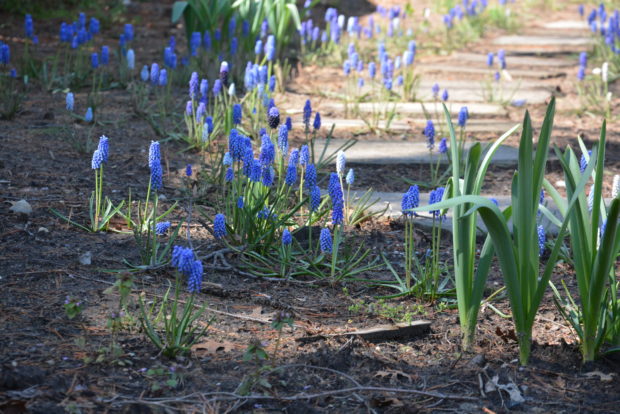 We also have planned for a few Venus dogwoods in the sunniest places, a few witch hazel, and a few Canadian hemlocks. Blue leaved hostas, big and small. If we plant any astilbe, it will be a loose and airy growing version. A stand of goatsbeard is a good choice for the back of the shady border. Like snakeroot, they take some time to establish and grow – but they are well worth the trouble.
We also have planned for a few Venus dogwoods in the sunniest places, a few witch hazel, and a few Canadian hemlocks. Blue leaved hostas, big and small. If we plant any astilbe, it will be a loose and airy growing version. A stand of goatsbeard is a good choice for the back of the shady border. Like snakeroot, they take some time to establish and grow – but they are well worth the trouble.
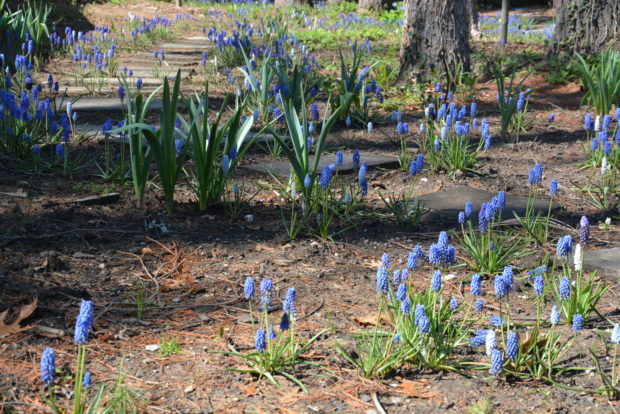 Right now, this is a garden of possibilities. What a pleasure to be at that point, in early spring. If you are planning a garden in our zone right now, check out the Missouri Botanic Gardens opinion about your choices. And leave some spaces and places for grape hyacinths.
Right now, this is a garden of possibilities. What a pleasure to be at that point, in early spring. If you are planning a garden in our zone right now, check out the Missouri Botanic Gardens opinion about your choices. And leave some spaces and places for grape hyacinths.
